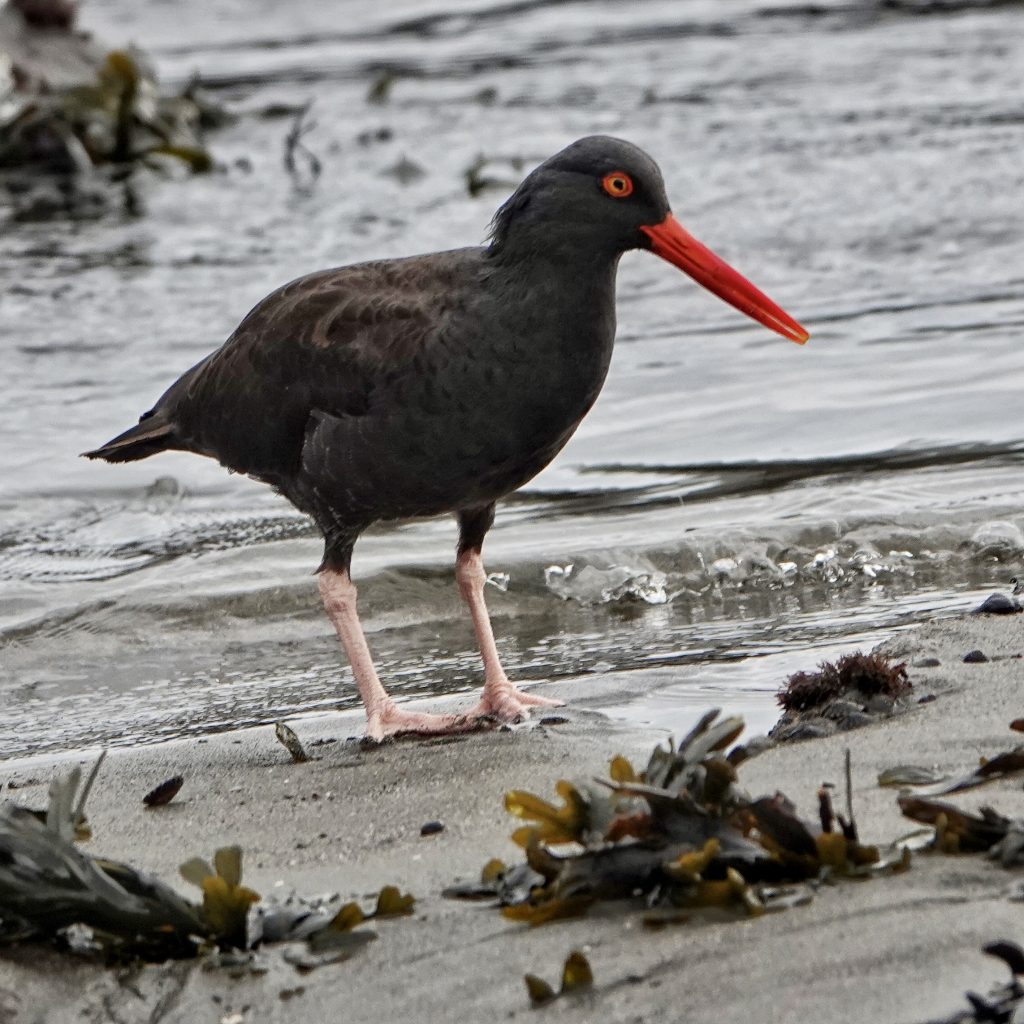
It has been a busy couple weeks for yours truly! In addition to the holiday festivities, my nbo Morgan recently bought a house, so I helped them move and build a fence to contain their rambunctious dogs. But the lengthening days have me excited to start getting out into the woods and fields again. And, after some initial inertial resistance, I’m getting back into the swing of writing these profiles by talking about one of my favorite shore birds, the black oystercatchers.

Black oystercatchers are not particularly flighty birds, but the combination of their innate wariness (unfortunately, when I have startled them into flight, my treble deaf ears have never registered the ‘ringing whistle’ they are said to emit when alarmed) and often inaccessible rocky haunts meant that I’d never been particularly close to any of these spectacular birds, though I’ve seen them often enough to be disappointed in any trip to the coast that didn’t produce at least one sighting. But on my visit to Lone Ranch Beach in Curry County, Oregon, I encountered a pair that seemed inured to the presence of humans (possibly because it is apparently a favored place for domestic dogs, since I saw at least a dozen walking with their handlers), and they allowed me to follow them about, from a distance as little as 30’, as I took waaay too many photos.
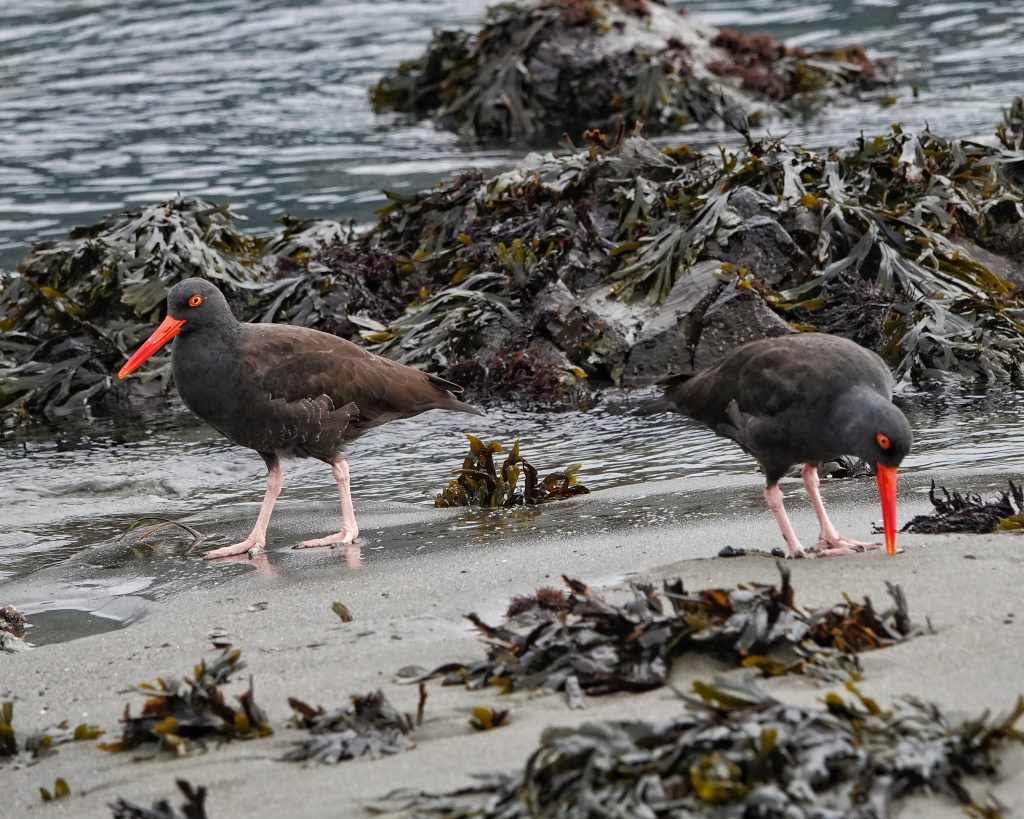
Black oystercatchers are said to feed primarily on mollusks like mussels and limpets (although it’s interesting to note that they seldom attack oysters), but during my observation of this pair, which occurred roughly 1/2 to 2/3 of the way down the ebbing tide, they seemed to be focusing their attention on small crustaceans like amphipods, although I see from my photos that there are a few with what appears to be a limpet in their beak, so I obviously missed the strikes, and one where the bird is examining a sandy rock that has some limpets on it, so I may have misinterpreted the targets of their hunt. I can state that I didn’t see either of them attack any mussels, which were relatively abundant. But there also didn’t seem to be much urgency in their hunting, as they often merely stood in one spot staring out to sea, so possibly they were either already relatively satiated, or they were just biding their time, waiting for the bonanza of full ebb.
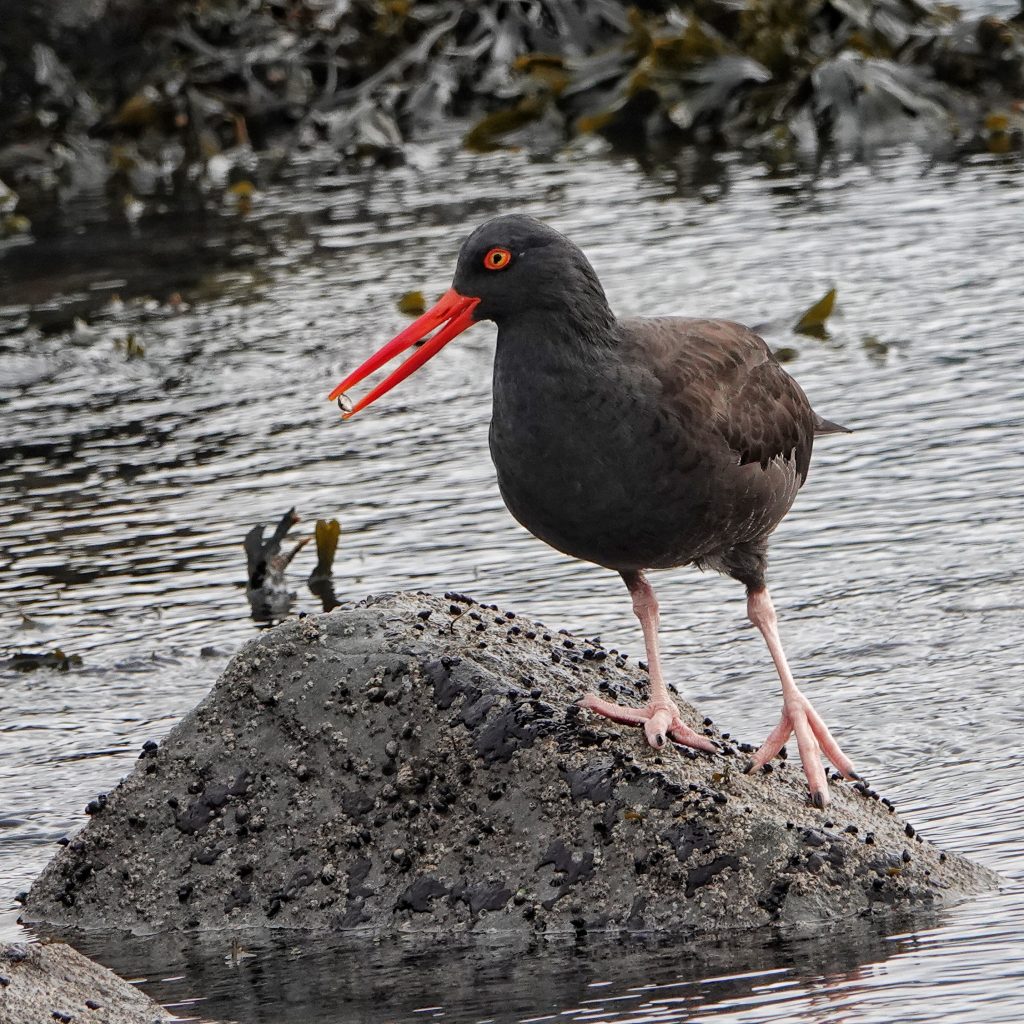
When they do attack mussels they either jam their stout, red beak into a slightly open shell and prise the valves apart, or they hammer at the hinge until the shell can be opened. And they obviously do feed heavily on limpets, prying them off rocks or hammering through their shell, such that they have a significant effect on the population dynamics of this clade (Peter Frank; 1982). There is also an interesting study (Hazlitt, et al.; 2002) which shows that, at least in the Strait of Georgia in British Columbia, limpets make up the bulk of the diet that is fed to the chicks, who require up to 7 limpets per hour at 5 weeks old.
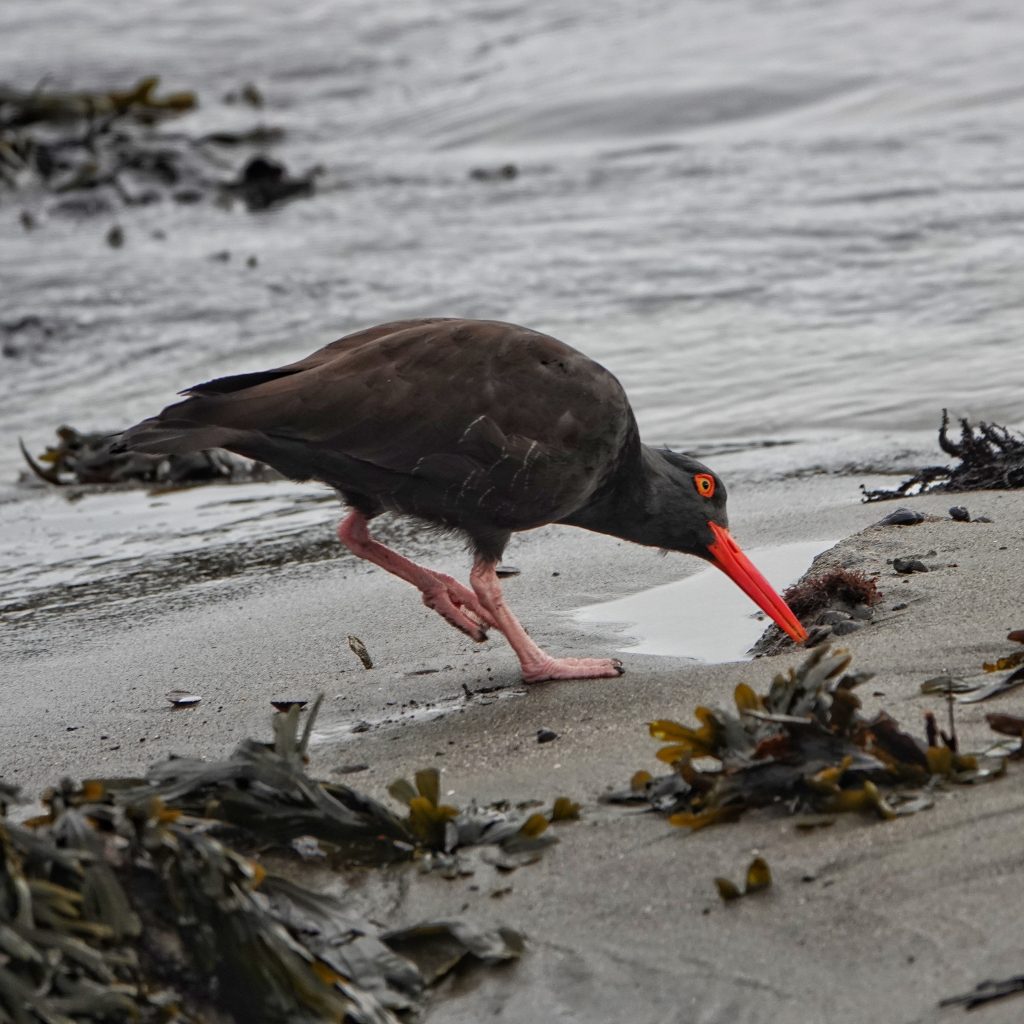
For the most part black oystercatcher populations seem to be stable, although there is a dearth of information on what those populations actually are (estimates place their population at around 10,000 along the whole of the Pacific Coast). They face threats from oil spills, habitat loss, climate change, and even the recovery of populations of marine mammals, since eggs and very young chicks are vulnerable to accidental destruction by hauled out sea lions and seals. For a more complete account of their conservation status, as well as an excellent overview of the species, see Tessler et al. (2007).
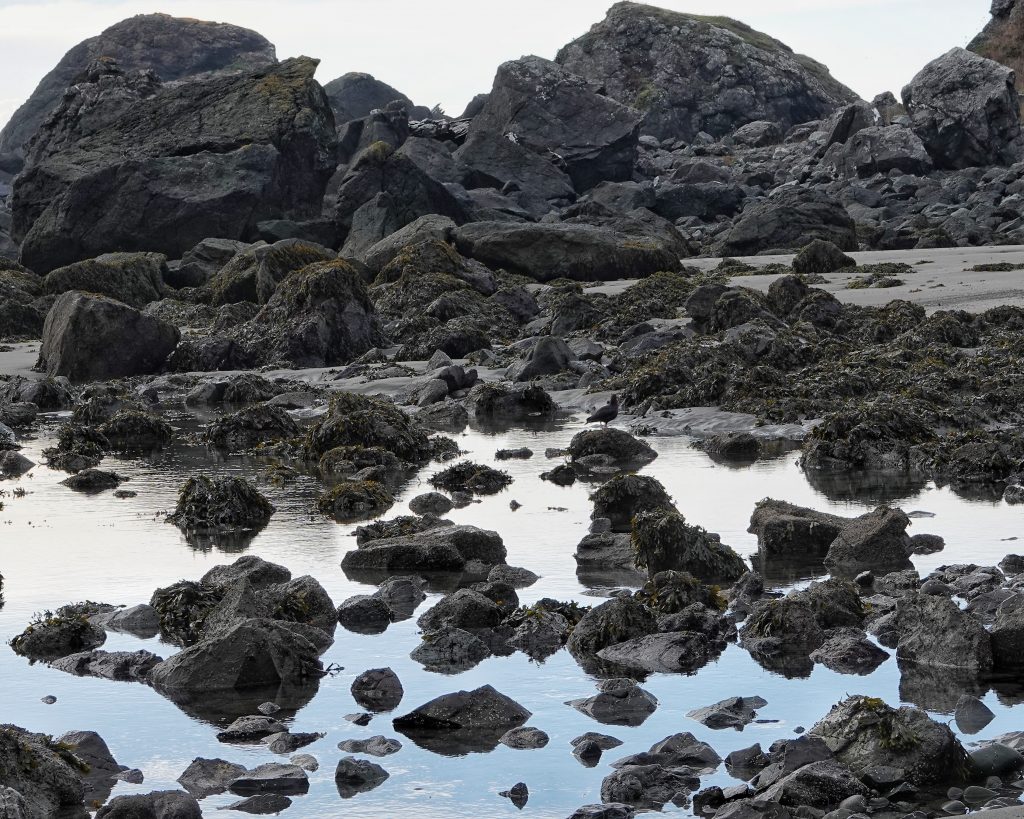
Description-Large (up to 18” tall) black bird with a long, stout, bright red bill, and pink legs and feet; due to suspected hybridization with American oystercatchers, s Oregon and California populations may have browner bellies and breasts and some white feathers;
Similar species-There is really nothing else in our region that looks like a black oystercatcher; the very rare-in-our-region American oystercatcher has a white breast and belly.
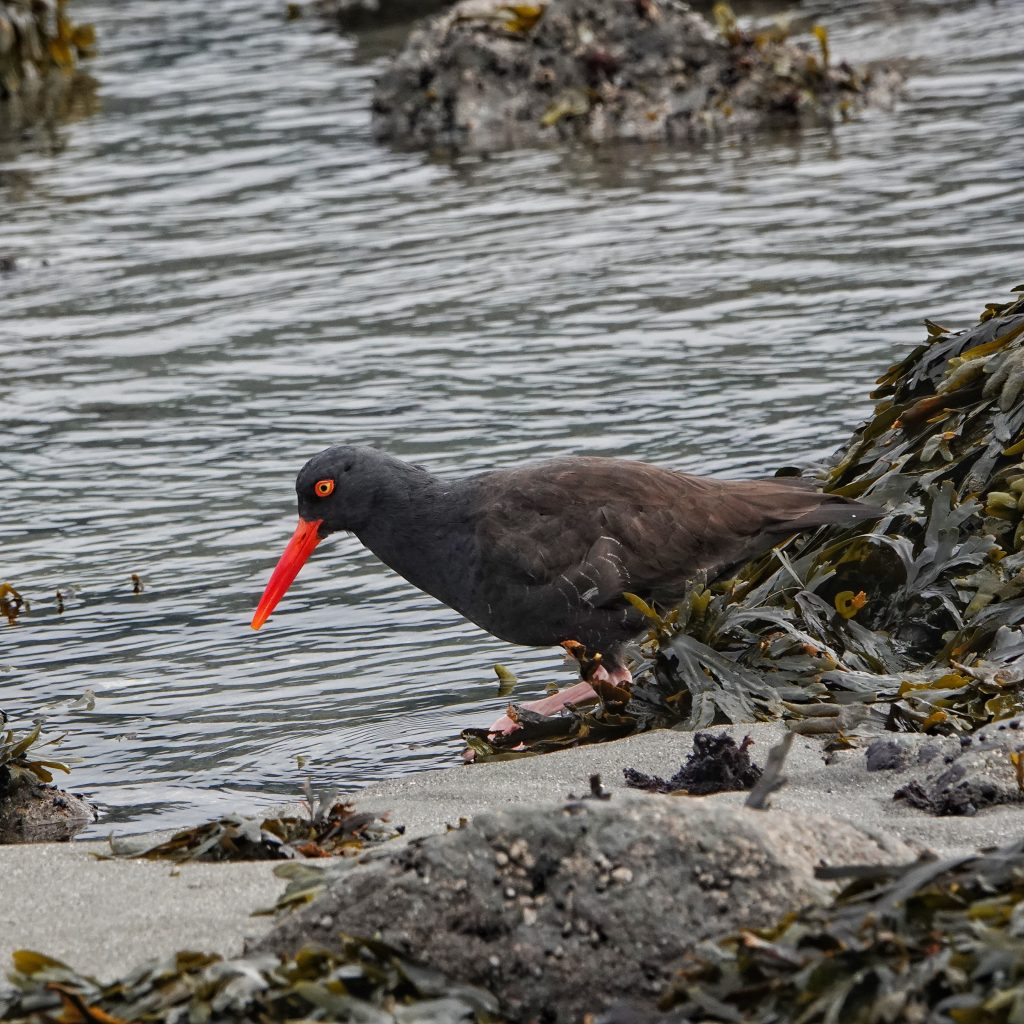
Habitat– Primarily rocky coastlines, but may be found on cobblestone beaches and jetties, from the low intertidal zone to the rocks above it; seldom found along sandy beaches.
Range-Immediate coastline from s Alaska to n Baja California; rare to occasional in Puget Sound
Adults active-Year around residents, though there may be movement to more sheltered areas in winter; most active during the lower half of the tidal cycle.
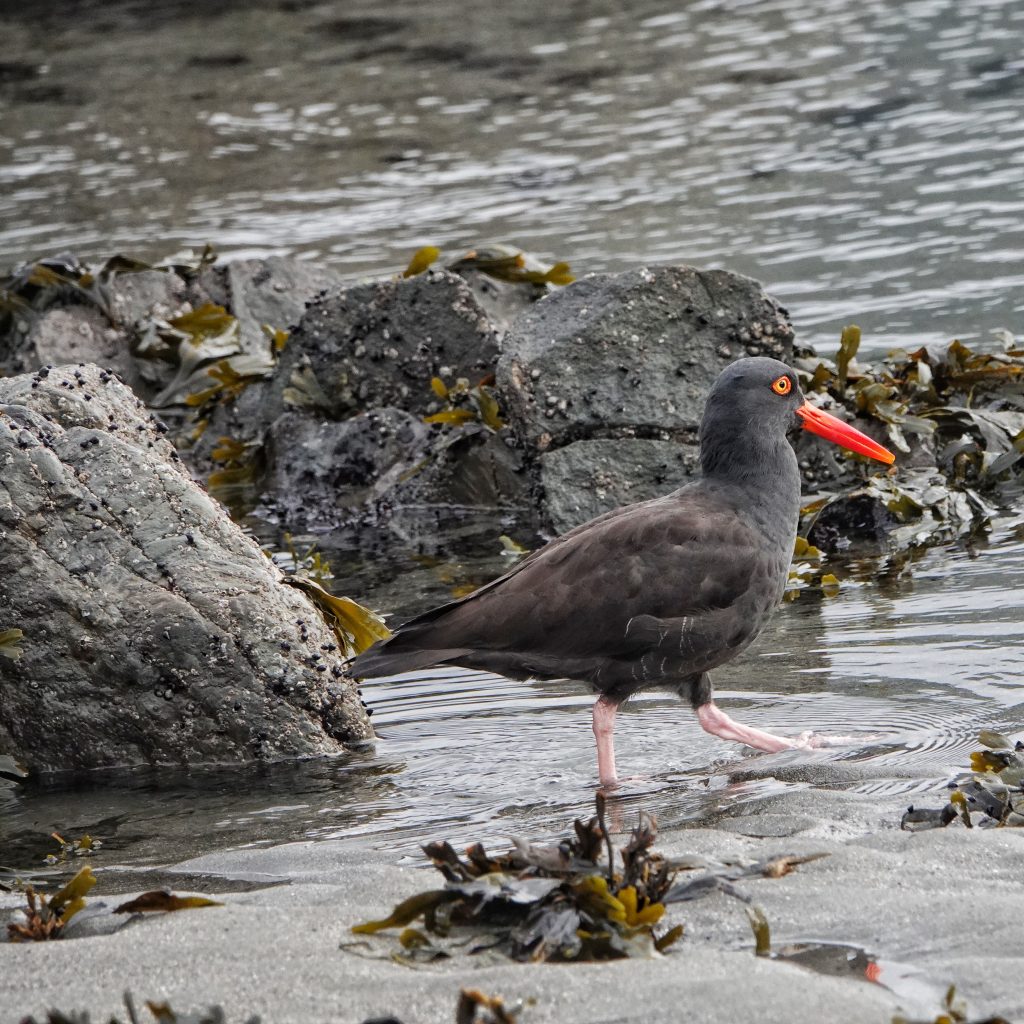
Eats– Primarily mussels, limpets, and chitons, but also eats small crabs and other crustaceans, and various other invertebrates.
Eaten by-Eggs and chicks are preyed upon by mink, marten, river and sea otters, foxes, bears, raccoons, skunks, feral cats and dogs, gulls, corvids, and others, and avoiding predation by terrestrial mammals is presumed to be the primary purpose of the preference for nesting on islands; adults are preyed upon by peregrine falcons, bald eagles, and others.
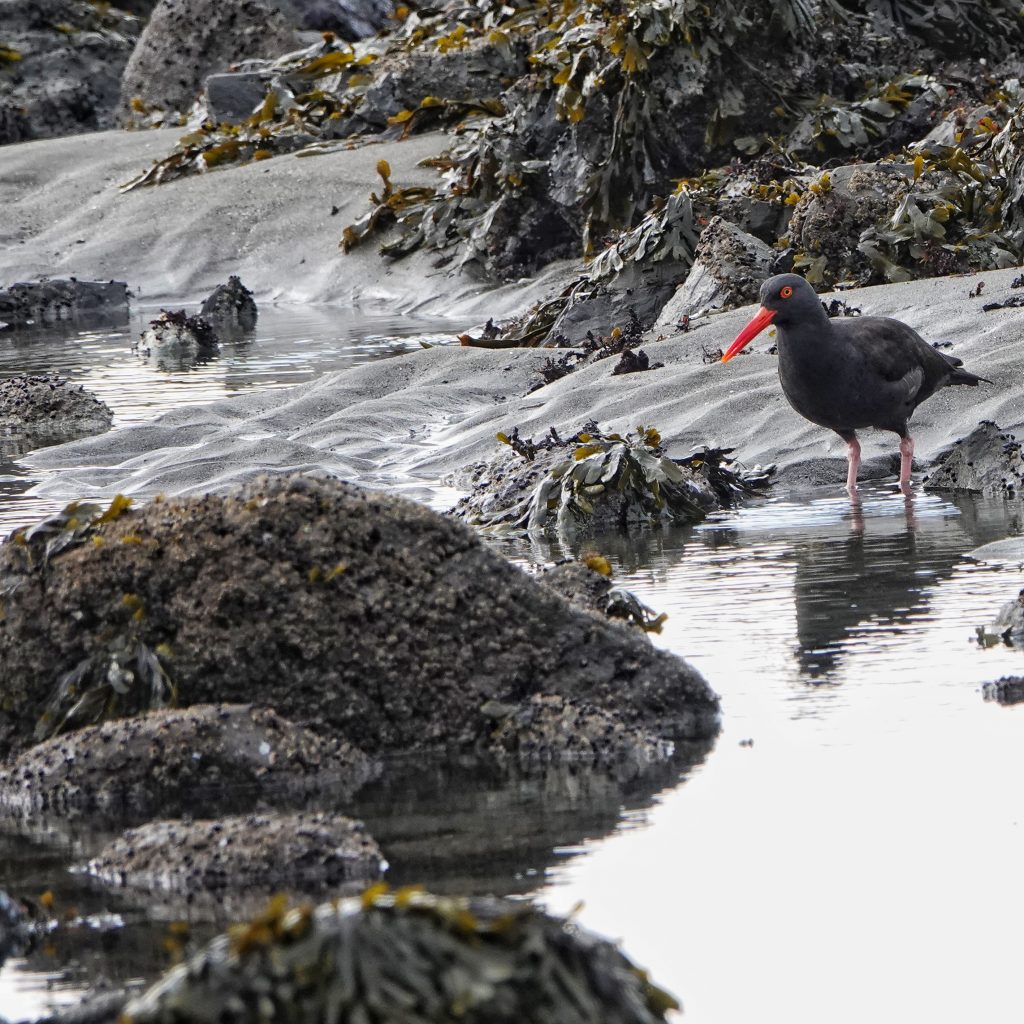
Life cycle-Nests beginning in May-June, primarily on islands, and utilizes a small depression just above the high tide line that may be bare or lined with shoreline debris; females lay 2-3 eggs, and both males and females incubate the eggs and feed the young; incubation takes 26-28 days; young are precocial, but are also fed by their parents for several months; able to fly in about 5 months; usually mates for life, and it seems likely that pairs stay together throughout the year; it is unknown for sure how long it takes to reach sexual maturity, but it may be up to 5 years; may live up to 15 years
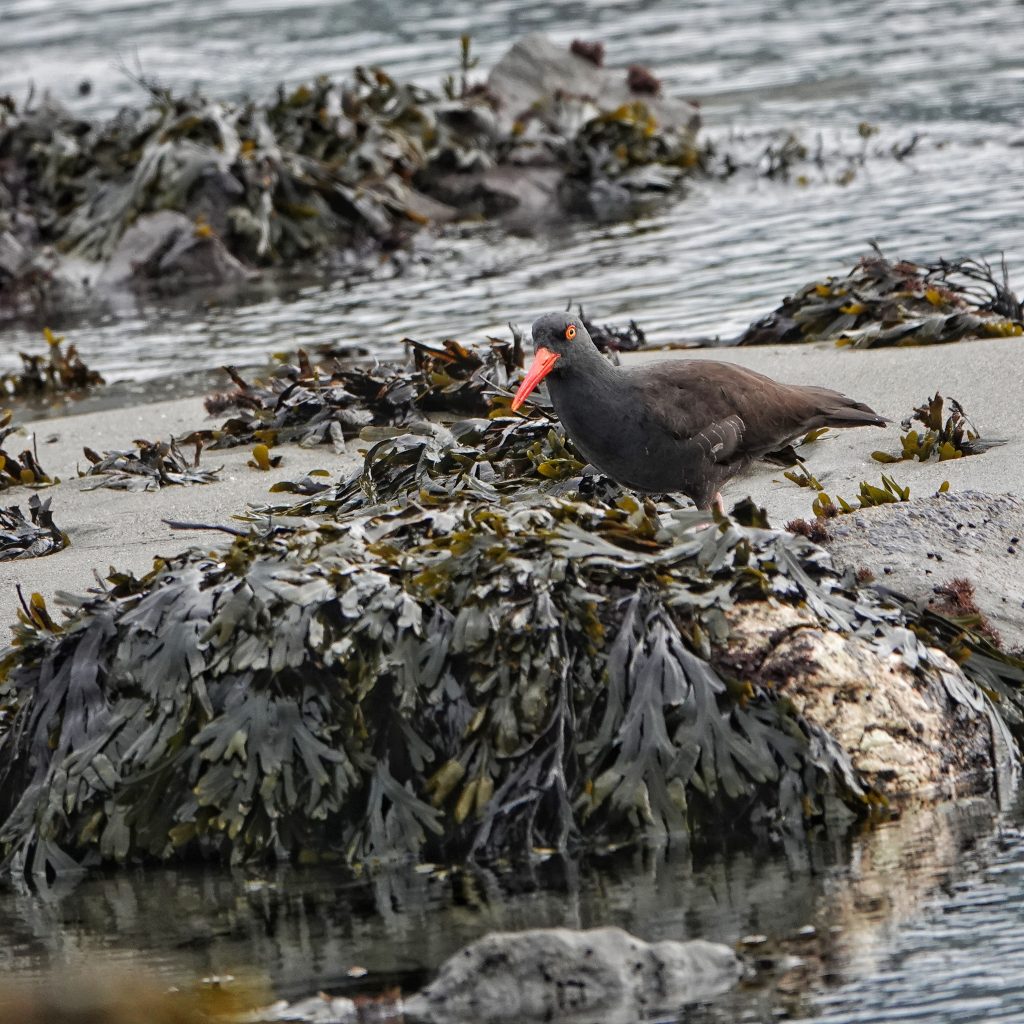
Etymology of names–Haematopus is from the Greek words for ‘blood foot’, referring to the red legs of the Eurasian oystercatcher, which is the type species of this genus. The specific epithet bachmani honors John Bachman (1790-1874), a naturalist who was a friend to, and collaborator with, John J. Audubon, who first described this bird in 1838.
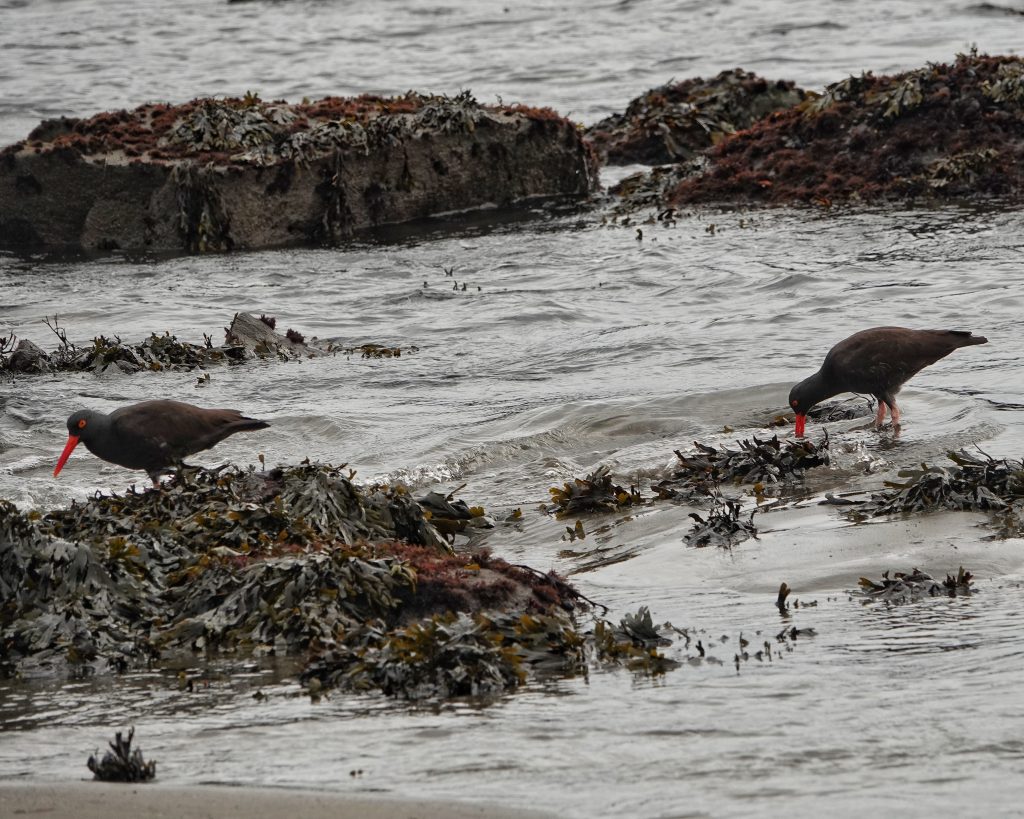
Black Oystercatcher Overview, All About Birds, Cornell Lab of Ornithology
Black Oystercatcher | Audubon Field Guide
https://www.sfu.ca/biology/wildberg/papers/HazlittArdea2002.pdf
https://en.wikipedia.org/wiki/John_Bachman
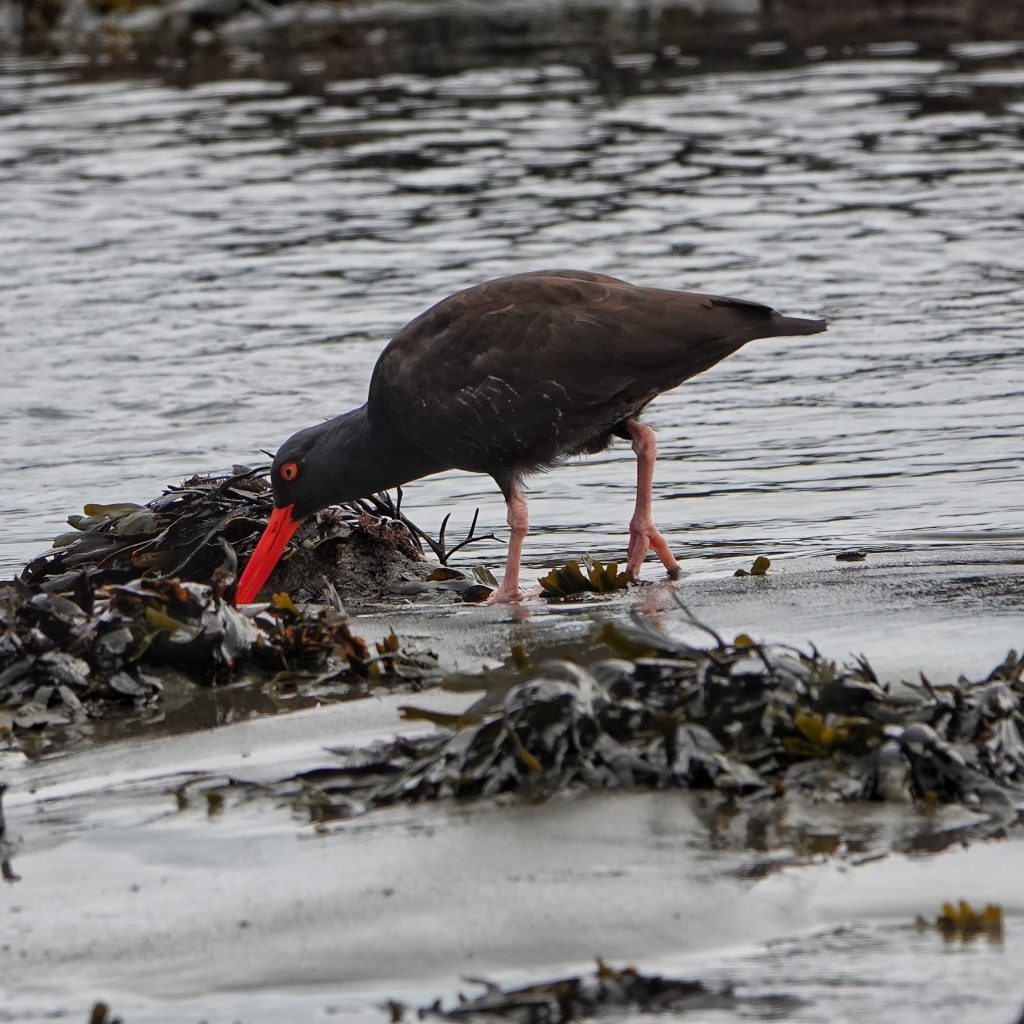
great photos
I appreciate your work!
Thank you, Marie!
Wonderful photos of a very interesting looking and entertaining bird. Hope 23 is filled with good opportunities for you to indulge in the magic of observation and the joy in sharing. I saw some turtles, egrets and white pelicans in a Riparian Preserve Park in Arizona a couple of weeks ago. Fortunately I saw a roadrunner the day before so I knew I wasn’t lost. 😎
Best wishes to you too, Doug!
I admit one of the reasons I like these shorebirds so much is that they’re really easy to identify in winter compared to tan….buff….more tan….a little white with–you guessed it–tan. Great pictures!
Yep, easily identifiable shorebirds are quite endearing to me too! Thanks for your appreciation!
Happy new year! The rabbit hole your tree ID posts sent me down wasn’t unnoticed–I received three (more) tree ID guides for Christmas.
I better get busy figuring this stuff out.
Very cool, Kat! Have fun!
Thanks much, Dan. The endearing oyster catchers seem to be among those most easily anthropomorphized.
I guess they eat the limpets, shell and all? I might prefer a little mignonette sauce.
Cheers.
Thanks for your appreciation! They actually remove the meat from the shell, although whether they use their tongue or their beak to do so was something I could not ascertain.